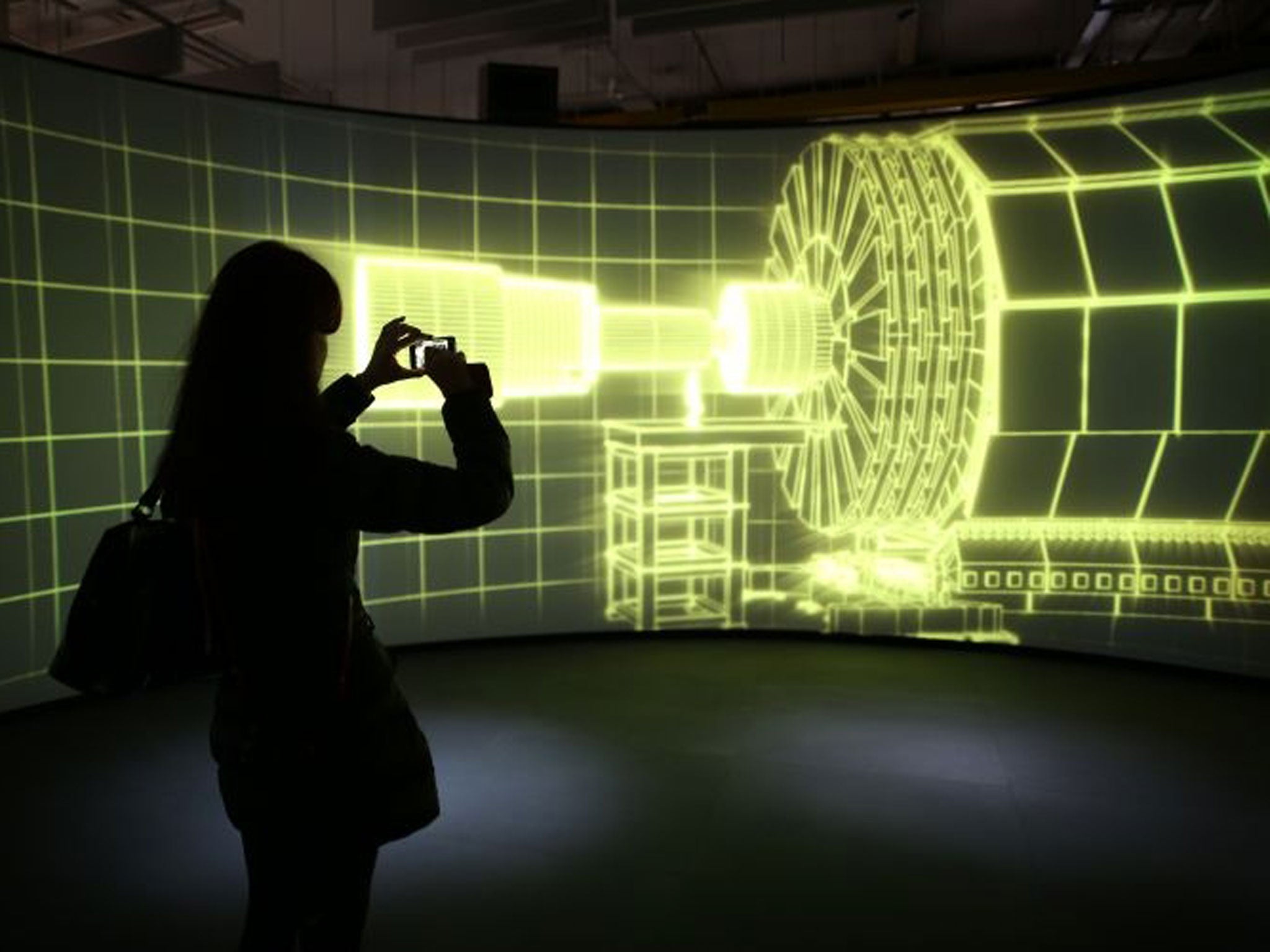Large Hadron Collider exhibition review: Art and science collide with spectacular results at the Science Museum
A pocket version of probably the most complicated scientific machine on the planet on display

Your support helps us to tell the story
From reproductive rights to climate change to Big Tech, The Independent is on the ground when the story is developing. Whether it's investigating the financials of Elon Musk's pro-Trump PAC or producing our latest documentary, 'The A Word', which shines a light on the American women fighting for reproductive rights, we know how important it is to parse out the facts from the messaging.
At such a critical moment in US history, we need reporters on the ground. Your donation allows us to keep sending journalists to speak to both sides of the story.
The Independent is trusted by Americans across the entire political spectrum. And unlike many other quality news outlets, we choose not to lock Americans out of our reporting and analysis with paywalls. We believe quality journalism should be available to everyone, paid for by those who can afford it.
Your support makes all the difference.OK, this is about the place where the very hot meets the intensely cold, where the big sits alongside the extremely small … and where science meets art. Collider is about some of the hardest yet most fascinating concepts in nature, distilled through the imaginative perspective of the human mind.
It’s not easy depicting something the size of the London Underground’s Circle Line, with magnets the size of a house, in a museum space not much bigger than a gym. And it’s just as hard to visualise the events that take place when one subatomic proton travelling at 99.9999991 per cent of the speed of light hits another travelling at the same speed in the opposite direction.
But it works. The Collider exhibition at the Science Museum gives a very decent impression of what it’s like to get up close and personal with the Large Hadron Collider (LHC) at the European Organisation for Nuclear Research (Cern) in Geneva, probably the most complicated scientific machine on the planet.
If fact, in many ways it is better than the real thing. On the one occasion I actually went to Cern to see the massive circular tunnel where the machine would be built, I came away overawed and frankly confused by the sheer scale of the operation. In a way, it was just too big to take in.
Collider, on the other hand, is a pocket version of the real thing, something that you can absorb and digest without getting a headache at the end of it all. It is a superb introduction to the esoteric world of experimental particle physics.
Collider starts out with a short drama sequence written by playwright Michael Wynne, winner of an Olivier Award for his comedy The Priory.
The dramatisation begins with an actor playing the role of a Cern student who has to present the first definitive LHC results pointing to the existence of the Higgs boson, and finishes with Brian Cox playing a cameo role as Cern’s new boy “Brian”, asked by the control room staff to get the coffees in, which he does with a professional wince at the camera.
From here, the audience can wander at their own speed through a mock tunnel that represents the journey through the LHC, which in reality extends for some 27km underground. You can see the lab-bench notes, the calculations and diagrams that are grist to the brainy mills of the geeks at Cern.
Eventually, you end up in a circular space with a wrap-around screen where a computer-generated video sequence takes you through the LHC as if you were one of those protons travelling at 99.9999991 per cent of the speed of light.
The collision itself, based on real images from the LHC, appears like a magnificent post-modernist painting. Art and science really do collide, with spectacular results.
Join our commenting forum
Join thought-provoking conversations, follow other Independent readers and see their replies
Comments